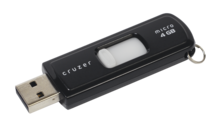Turning carbon dioxide emissions into chemicals, fibres and jet fuel
A carbon revolution? Scientists are using the principles of photosynthesis to turn CO2 emissions into useful products

Shell is collaborating on a project in Switzerland that will produce jet fuel, using carbon dioxide, water and solar energy. Photograph: Gerolf Kalt/ Gerolf Kalt/Corbis
Monday 4 August 2014 13.28 BST
When fuels are burned, the products are carbon dioxide, water, and heat. Lots of heat. This heat takes energy out of the chemicals (say petrol, coal or gas) and releases it, leaving behind very low energy molecules, like CO2. A chemist's dream is to find efficient ways of putting this energy back into the carbon dioxide to turn it into something else useful. In other words, to convert a waste product that causes global warming into something useful.
If carbon dioxide is in a product that will keep it locked up for a long period of time, like furniture or building insulation, this is a way of removing it from the air: carbon capture. And CO2 is free or, given policies to make the emission of carbon dioxide a cost to business, it even becomes a starting material for chemistry that has a negative cost.
Luckily, nature already does what chemists aspire to. It efficiently takes carbon dioxide from the air, using energy from sunlight and natural catalysts, and converts it into the carbon building blocks of plants and trees: photosynthesis. Given the intense international focus on greenhouse gases over the past decade, it is unsurprising that many chemists are trying to find routes to useful products. The challenge, as with much of chemistry, is to find synthetic catalysts that speed up reactions in a way that is as good as nature or better.
Liquid Light, a spinout from Princeton University, uses electricity and catalysts (what they are is a secret), to make chemicals from carbon dioxide, and seems to have progressed to having a near-commercial process to make ethylene glycol, a key component of anti-freeze and, more interestingly, a building block of polyester bottles and fibres. Scientists at Liquid Light believe they can tailor their catalysts to make other chemicals, and that the electricity used can come from solar panels. The company takes photosynthesis-level efficiency as the benchmark against which to measure their process, and claims it is now twice as efficient.
A German chemical company, BASF, and a US company, Novomer, are capturing CO2 from power plants or other waste sources, using novel catalysts to make polypropylene carbonate. This plastic can be used for coatings, adhesives, foams and packaging and can replace other plastics in these applications that are currently made from oil. Both companies are moving towards commercial processes. Bayer, another large German chemical company, is also advancing a process to make polyurethane foams using carbon dioxide.
A more brute force approach is that taken by the Solar Jet programme in Switzerland, led by Dr Aldo Steinfeld of ETH-Zurichcollaborating with Shell. They designed a clever reactor that generates very high temperatures from solar energy to break down carbon dioxide and water, converting them to hydrogen and carbon monoxide. From this mixture they can make kerosene for jet fuel using well-known chemical processes. This is still at an early stage – so far they have made one litre of fuel – but sometimes these high temperature processes are more straightforward to scale up than catalyst-based approaches.
Carbon dioxide utilisation is attracting clever chemists and engineers, start-up venture capital and big established players. This is an area to watch for one or more revolutions of the chemical industry in the next five years.







